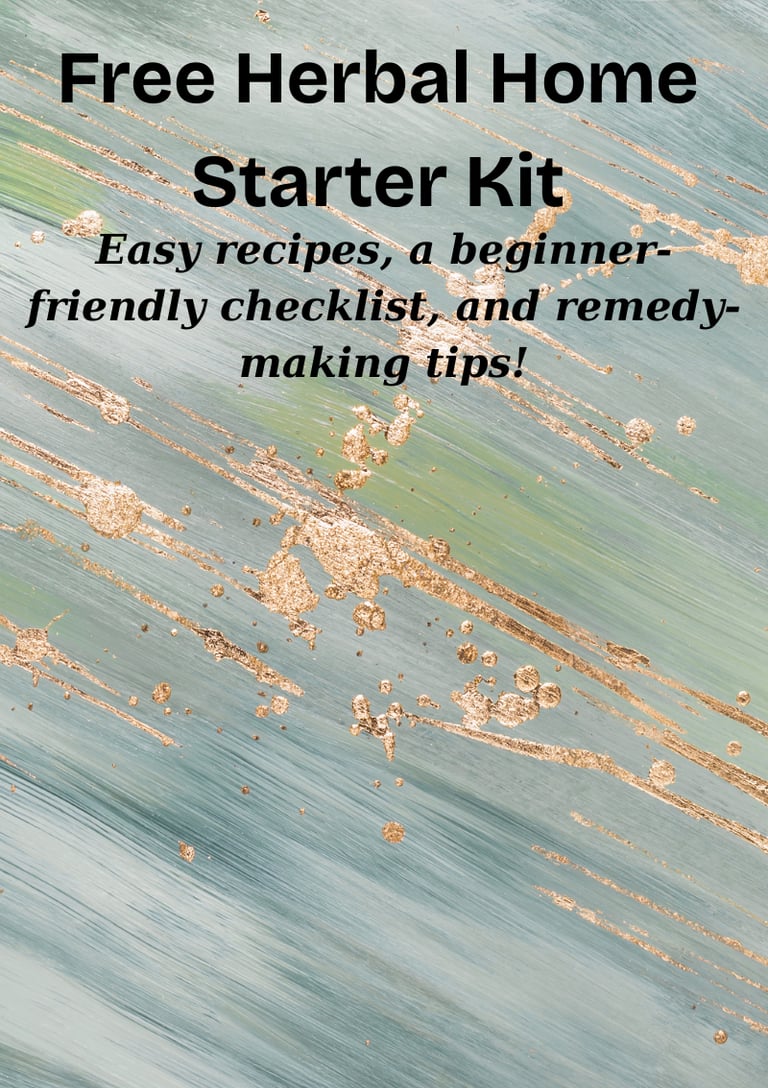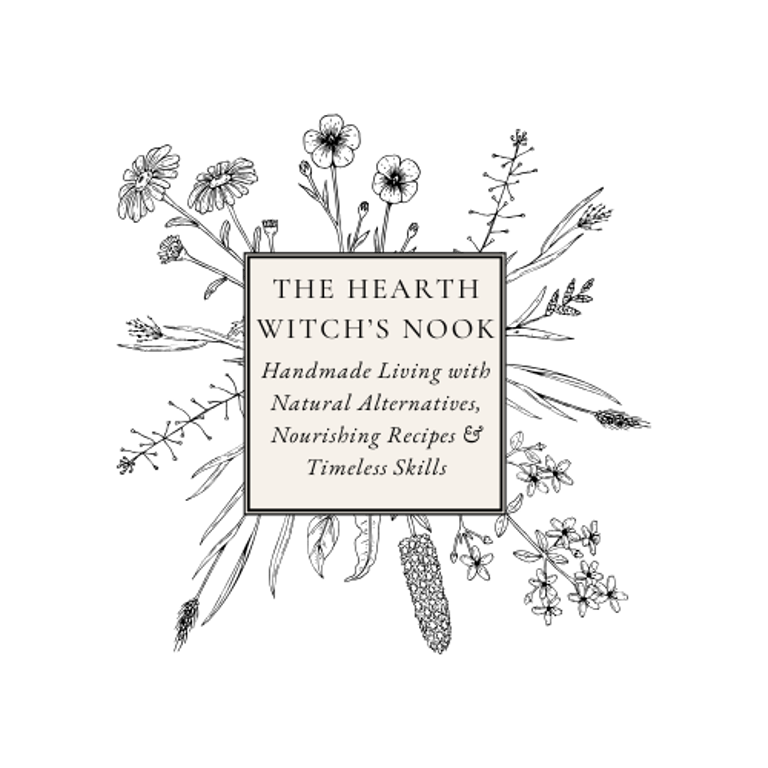Behind the Nook: How I Built My Home Apothecary (and Why I Started)
Discover how I built a home apothecary from scratch using herbs, oils, and natural remedies. Start small, save money, and swap toxic products naturally.
BEHIND THE NOOK
CJ
6/11/20252 min read
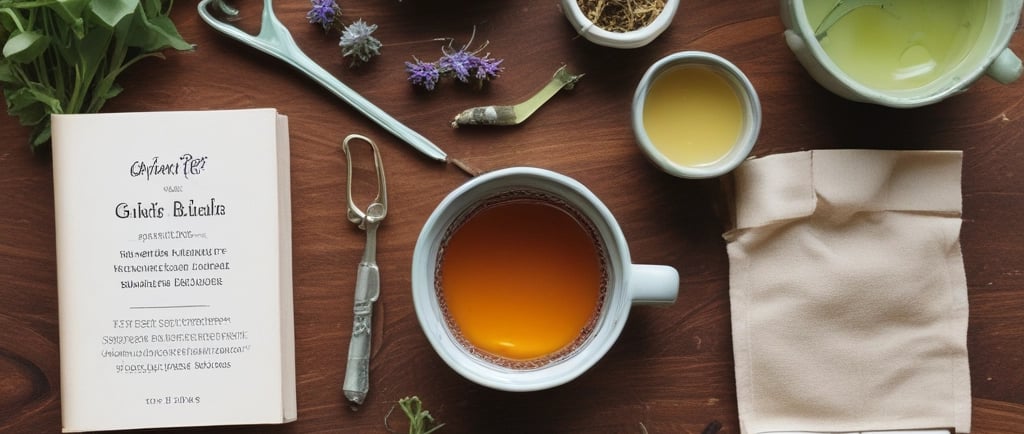

Let Me Tell You a Secret...
When I first started replacing store-bought products with natural alternatives, I didn’t have a grand plan. I had a half-used bottle of toner that smelled like a chemical spill, a son with sores in his mouth from commercial toothpaste, and a toddler who just could not settle at night. Every bedtime became a battle—and so I started making tea. Chamomile and lemon balm, steeped right into our dinner routine, helped calm her little body in ways nothing else had.
At the same time, I had a growing, nagging feeling about the number of medications we were leaning on just to get through the day. We were surviving, not thriving. And while I believe in the power of modern medicine, I also believe our bodies are calling for support, not suppression.
That one cup of tea turned into a shelf of herbs, a drawer of oils, and eventually, an entire cabinet we now lovingly call “The Nook.”
Why I Built a Home Apothecary
It wasn’t about aesthetics (though glass jars are pretty). It was about knowing—knowing what goes into my family’s salves, sprays, teas, and tinctures. About saving money, simplifying routines, and making my home feel just a little more magical and a lot more intentional.
It’s also been about reconnecting—with nature, with my ancestors, and with the belief that’s been passed down for generations:
“For every illness or need, nature offers a remedy.”
What’s In My Apothecary Today
Here’s a peek at some of the most-used items on my shelves right now:
Dried herbs like chamomile, comfrey, calendula, nettle, and marshmallow root
Infused oils (calendula in olive oil, lavender in jojoba)
Tinctures like valerian root and California poppy
Kitchen crossovers like beeswax, magnesium flakes, and aloe vera gel
Each one has its place in our routine—from tea blends to skin balms, deodorants to sleep tinctures.
What I Wish I Knew When I Started
You don’t need everything at once. Start with 3–5 herbs and 2 carrier oils that speak to the part of your life or body that needs the most support—whether that’s sleep, skin, digestion, or something deeper-Here's a link to my current Top 10 Multi-use Ingredients blog to give you ideas to start
Always label everything (ask me about the time I confused marshmallow root and licorice in a throat blend...).
Invest in good storage: glass jars, dark dropper bottles, and tins are your best friends, and you will always end up needing more than you think!
Making your own doesn’t mean doing it alone—find your community, your trusted resources, and your rhythm. There’s magic in learning together.
Final Thought
The Nook isn’t just a shelf in my kitchen—it’s a living part of our home. It changes with the seasons and grows as I learn. Whether you’re new to natural living or already deep in your own herbal journey, just know: it’s okay to start small, be imperfect, and make what works for you.
This isn’t about perfection—it’s about presence.

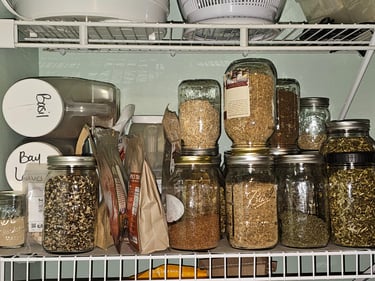
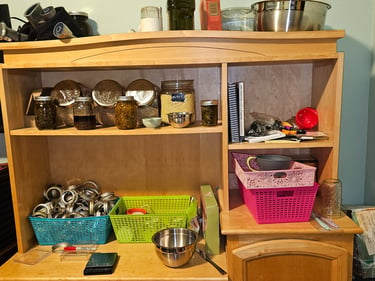



A glimpse at parts of my real life nook! Definitely not perfect, but surely present!
As an Amazon Associate, I earn from qualifying purchases. This means I may receive a small commission (at no extra cost to you) if you click a link and make a purchase. I only recommend products I personally use or trust for my recipes and projects.
this post is for informational purposes only and is not intended as medical advice. Always test products on a small surface first and use caution when using essential oils around children or pets
Questions? Email me at hello@thehearthwitchsnook.com
Explore natural remedies and hearth-centered living.
© 2025. All rights reserved.
Disclaimer: The content on this website is for educational and informational purposes only. It is not intended to diagnose, treat, cure or prevent any disease or health condition. Always consult with a qualified healthcare provider before making changes to your health or wellness routines-especially when using herbs, essential oils, or supplements for children, pets, or if you are pregnant, nursing or have a medical condition. The Hearth Witch's Nook is not responsible for individual outcomes.
